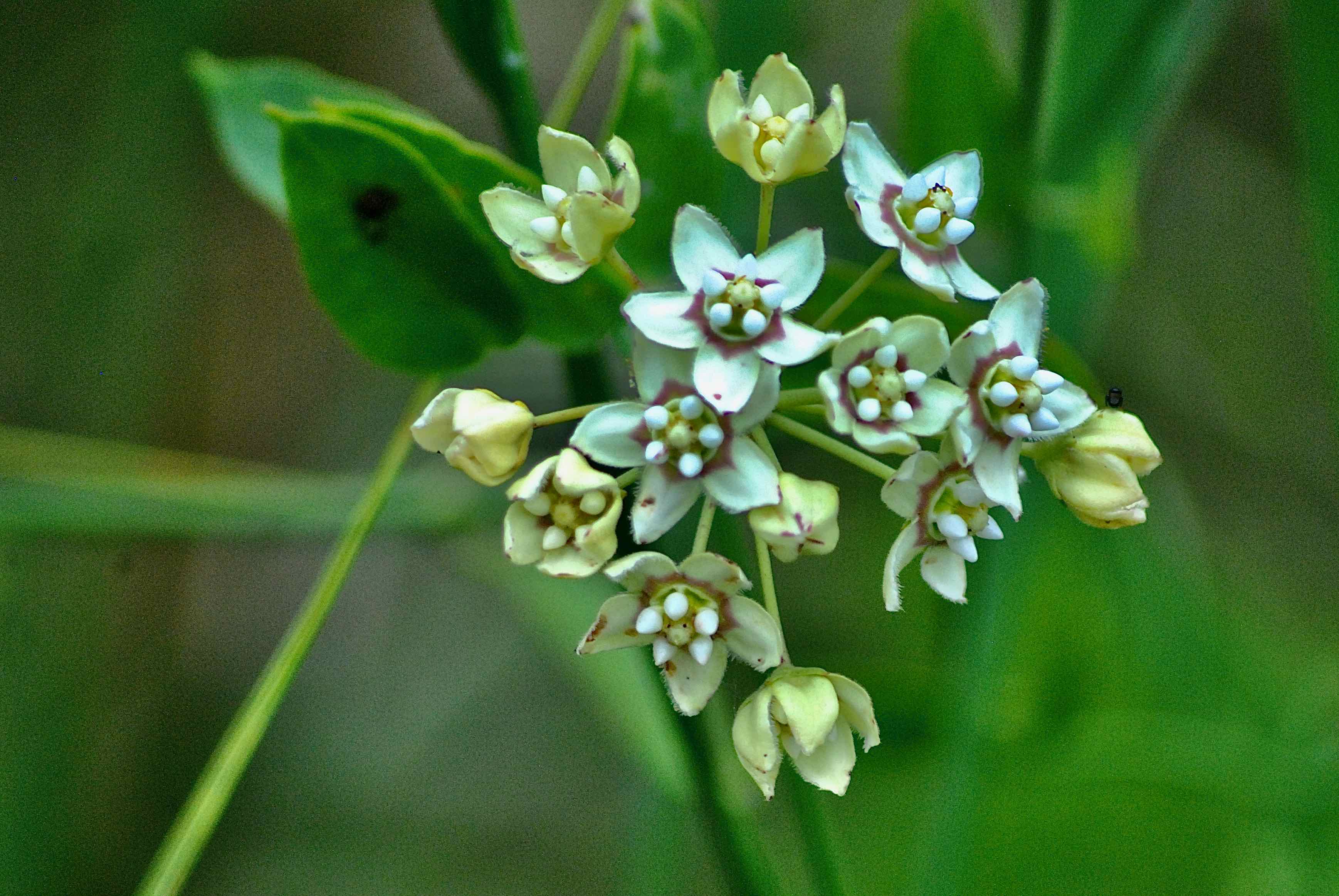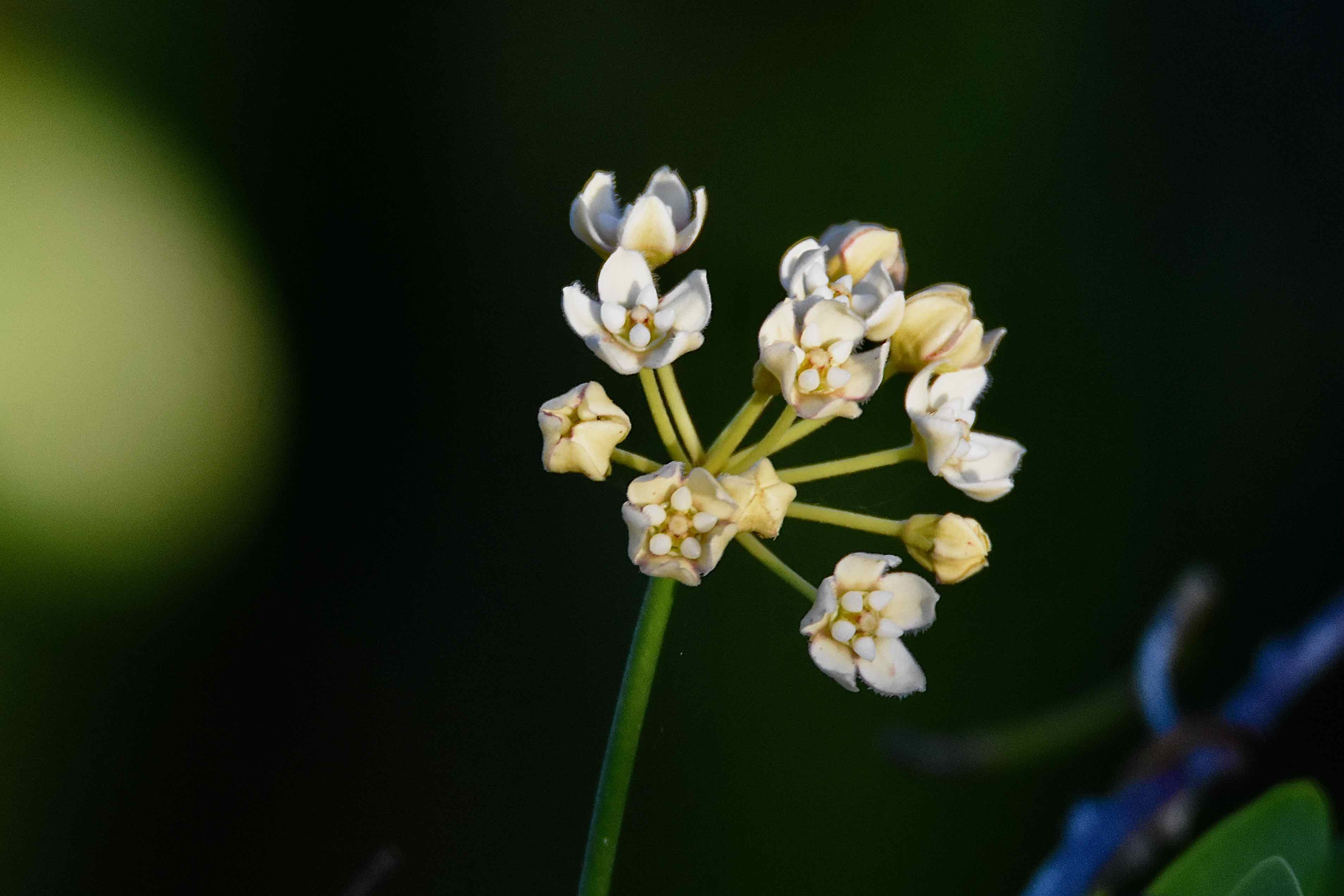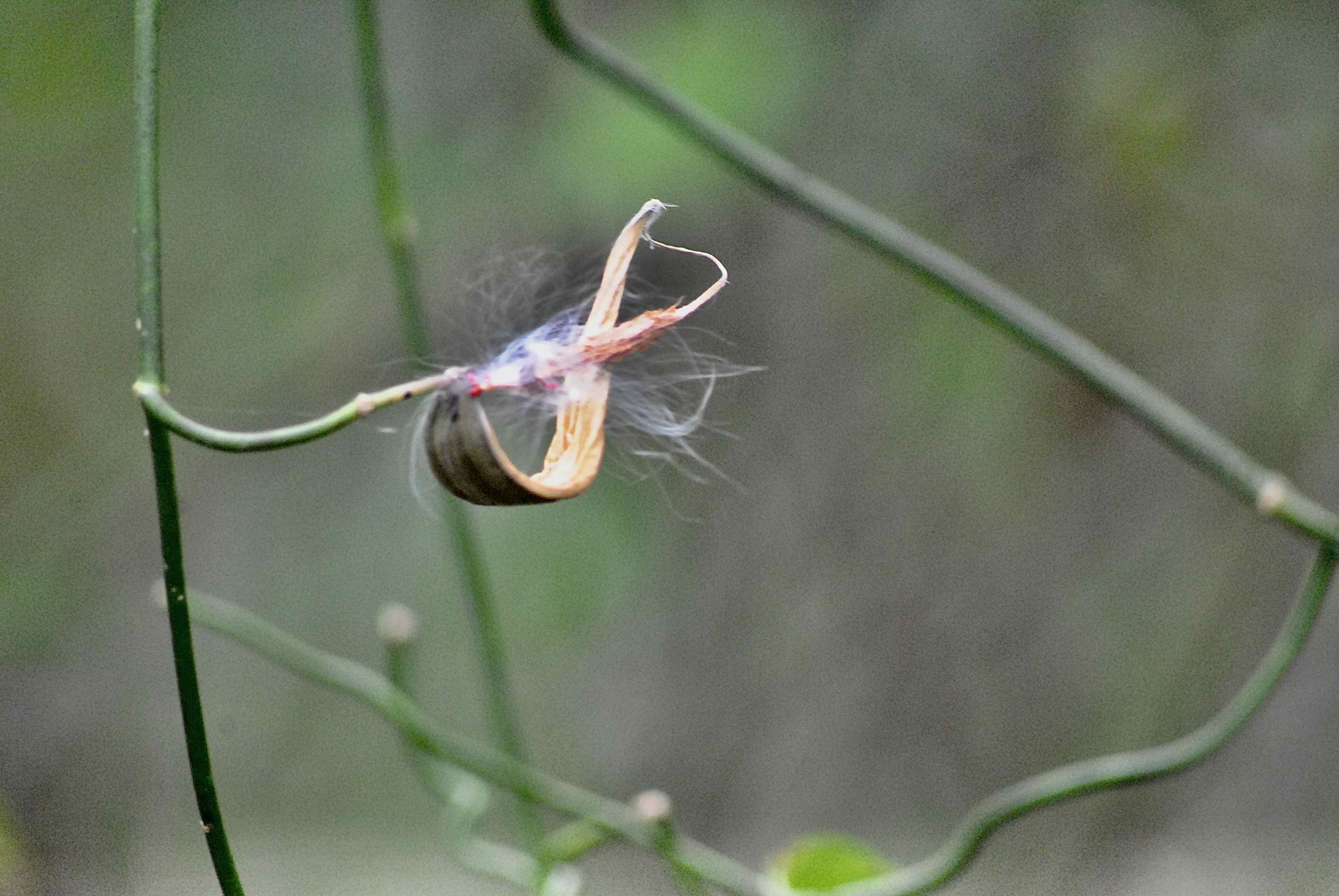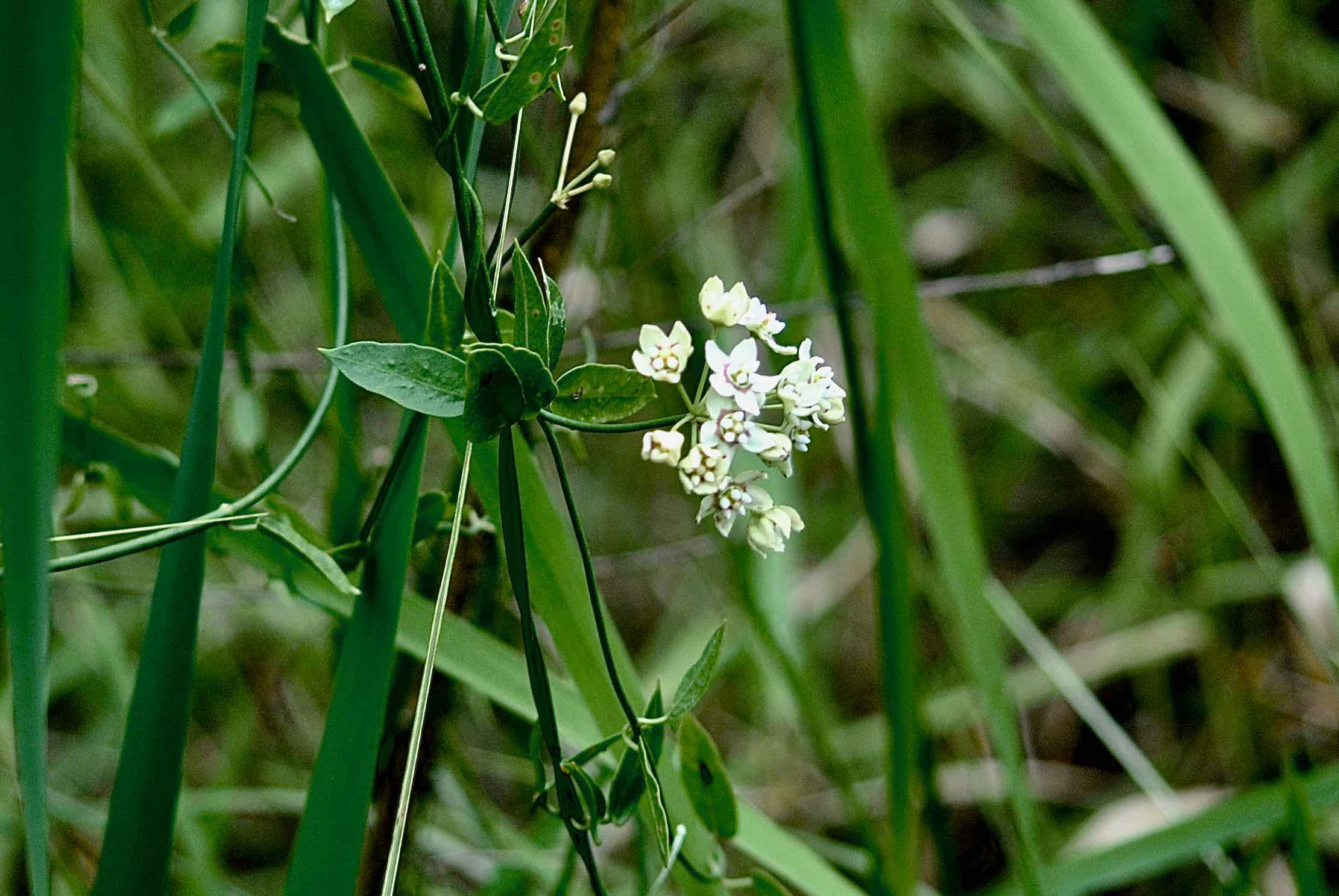
Whitevine, photographed at Corkscrew Swamp Sanctuary, Naples, Collier County, in October 2013.
Whitevine, Sarcostemma clausum, is a milkweed without the name. And with one claim to fame: its association with the monarch and related butterflies.
It is a Florida native, found throughout the peninsula south of Brevard County. Whitevine is also found in the Caribbean, Mexico, Central America and South America. It's also found in one county in extreme South Texas. It likes wet habitats, including hammocks and the edges of marshes and swamps, but it will grow in dry places as well.
Like milkweeds generally, the flowers are star-shaped and come in small clusters. In the case of whitevine, the flowers are white to greenish yellow, with pink or red ring in the center. Whitevine blooms January to October, then forms pods that produce whispy seeds that are blown with the wind, again typical of most milkweeds. White produces relatively few leaves; they are elliptical to lance shaped and form opposite each other along the stem. Those leaves are where the action is, however. Again, like milkweeds generally, whitevine produces a milky latex filled with toxic chemicals, including a type of steroid called cardenolides. The plants evolved to produce these toxic chemicals as a means of protecting themselves from the ravages of herbivores — planting-eating critters.
Coincidentally, monarch butterflies and a few other species, notably queens and soldiers, evolved to take advantage of these chemicals. These butterflies lay their eggs on milkweed leaves, including our guy, whitevine; the hatched offspring — caterpillars — eat the leaves and ingest the poisons, becoming toxic to any predator, birds in particular, that might be tempted to eat them. The chemicals also give these butterflies their bright orange coloring, which signals their toxicity. Birds eat one and learn the hard way to leave 'em be.
In a sense, whitevine and other milkweeds indirectly protect other butterflies who are orange in appearance like the monarchs et al but who don't feast on milkweed foliage. It's called Batesian mimicry.
There is one medicinal use for whitevine and that also involves the toxic cardenolides. The latex is a strong emitic, meaning it makes one toss his or her cookies, and in French Guiana, whitevine latex is used to induce vomiting in poison victims. Essentially, it's taking one poison to rid the body of another. Oh, and while we're at it, we might as well mention that the latex is also a skin irritant.
One odd note: we found a 1977 report from the Florida Department of Agriculture and Consumer Services that classified whitevine as a non-native and a major threat to the state's citrus industry. It found whitevine in certain areas infected with a rust, or fungus, that could be developed as a biological control for citrus growers. Of course, the consensus is that whitevine is native to Florida, and it would be unthinkable for a state agency to advocate similar methods today, especially given the plant's vital role in the life of the monarch.
As we said, this is a milkweed without the name. The University of Florida lists nine milkweed species native to South Florida critical to the survival of the monarch. Whitevine is the only one that isn't a member of the genus Asclepias. Some in the science community classify whitevine as a member of Asclepiadaceae, the milkweed family. The general consensus, however, is that it is a member Apocynaceae, the dogbane family. But then, the general consensus is that all milkweeds are members of Apocynaceae.
In any case, enthusiasts grow whitevine as an element in butterfly gardens. It can be grown from either the seeds or from cuttings. The plant is commercially available. We've seen size ranges for the plant from six to 10 feet in length to as much as 20 feet or more if it has something to grow on. That number presents a note of caution to anyone thinking about growing whitevine, especially in small space: it can aggressive and ramble onto plants and places in the landscape where it's not wanted. One more thing: iIt is not cold tolerant.
Other common names for whitevine include twinevine, white twinevine and white vine milkweed. It also has an alternative scientific name, Funastrum clausum.
The Gallery — Click on photo for larger image
U.S. Department of Agriculture Distribution Maps
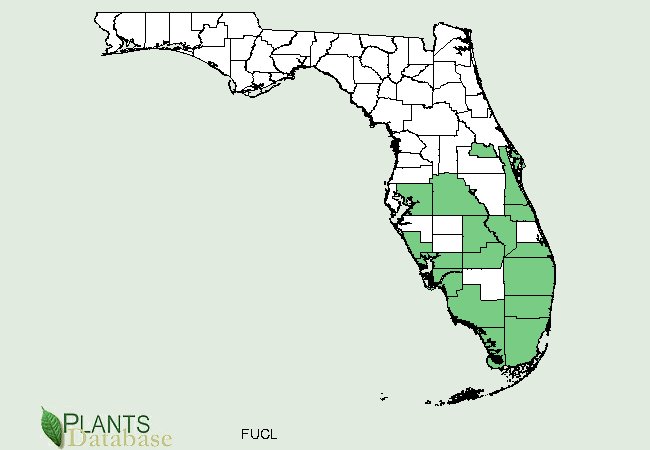

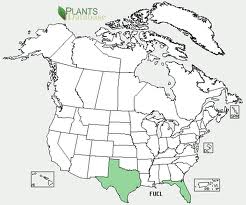
Links for

